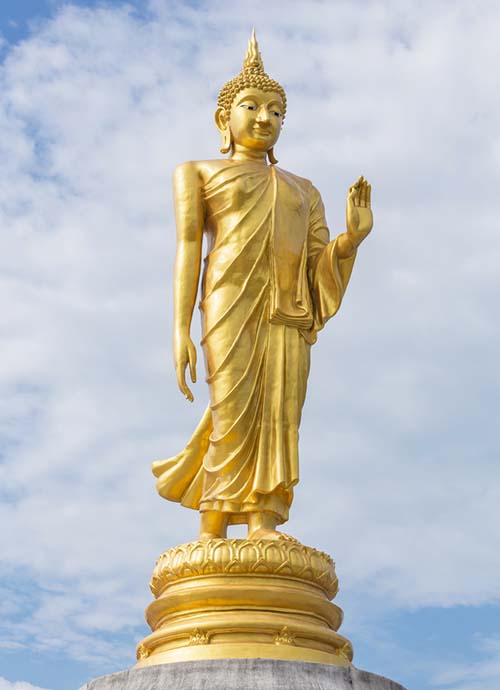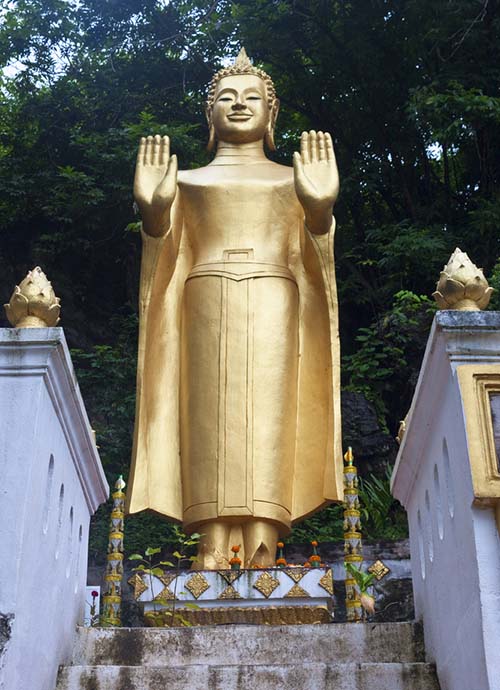
Abhaya Mudra
The fear dispelling gesture
The Abhaya or fear dispelling mudra can be seen on seated, standing and walking images. The gesture can be made with the right hand, the left hand or both hands. The hand is held upwards, palm facing outward, the fingers together, the arm bent at the elbow.
Meaning and origin of the Abhaya mudra
The mudra symbolizes dispelling of fear, protection and reassurance. Depending on region and era the gesture can also mean “stopping the sandalwood image” (right hand raised), “forbidding the relatives to fight” (left hand raised) or “calming the ocean” (both hands raised).
Forbidding the relatives to fight
The left hand raised in Abhaya mudra refers to an event when the Buddha’s relatives were fighting over water rights. Both the families of the Buddha’s mother and father depended on water from a river for irrigation of their land. When the river started to run dry conflict between the two families erupted. When the Buddha heard a battle was about to start between the two families he went back to the town of his parents to try to end the conflict. He organized a meeting with the leaders of both families and persuaded them to stop fighting, arguing human lives were more important than water.
Calming the ocean
Although both hands raised in Abhaya mudra is called “calming the ocean”, the gesture refers to an event when the Buddha stopped a flood caused by a river.
During travel the Buddha arrived at the village of three hermits who were fire worshippers. He requested one of them named Kasyapa for a place to stay overnight. The hermit gave the Buddha a hut on the banks of the river. When the swelling river threatened to submerge the hut, the Buddha stopped the waters from rising. Seeing this, the hermits and their followers of a thousand worshippers became followers of the Buddha.

The taming of the elephant Nalagiri
Sometimes a standing or walking Buddha is seen with the right hand raised towards an elephant. This posture refers to an event in the life of the Buddha known as “the taming of the elephant Nalagiri”.
Devadatta was a monk and a cousin of the Buddha, who became jealous of him. One day Devadatta asked the Buddha to make him the leader of the Sangha, the Buddhist community. The Buddha refused and Devadatta swore revenge.
One day the Buddha walked through a village. Devadatta fed alcohol to a particularly furious elephant named Nalagiri and had him attack the Buddha. The raging bull stormed towards the Buddha, who reached out his hand to touch the animal’s trunk. The elephant sensed the metta, the loving kindness of the Buddha, which calmed him down immediately. The animal stopped in front of the Buddha and bowed on his knees in submission.
Famous Buddha images in Abhaya mudra
One of the most famous Buddha images in Abhaya mudra is the standing image in the principal viharn of the Wat Chedi Luang in Chiang Mai.
An eye catching example of an image in “calming the ocean” mudra is the 20 meter tall standing Buddha at Khao Takiab hill in Hua Hin.
More mudras
Some other often seen mudras are: